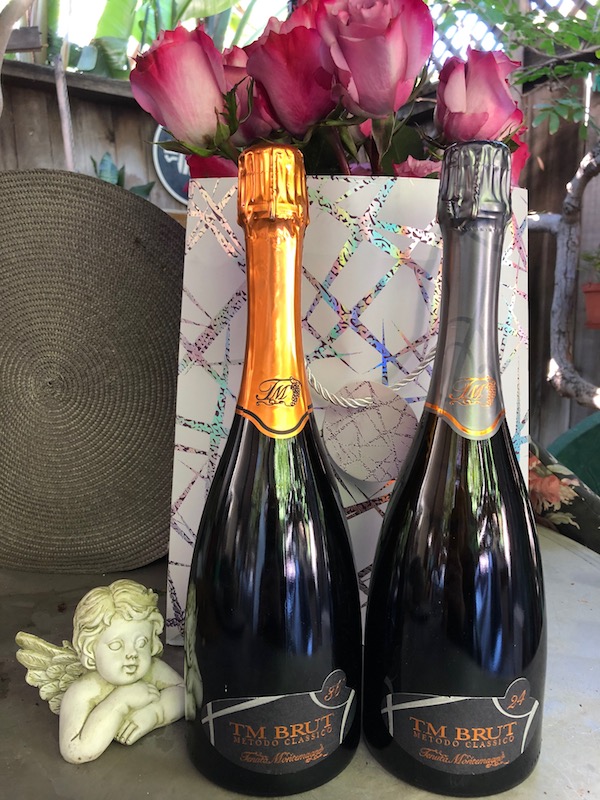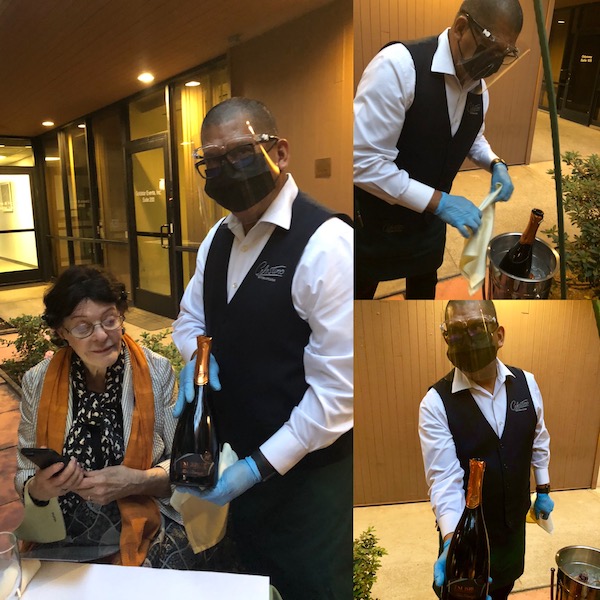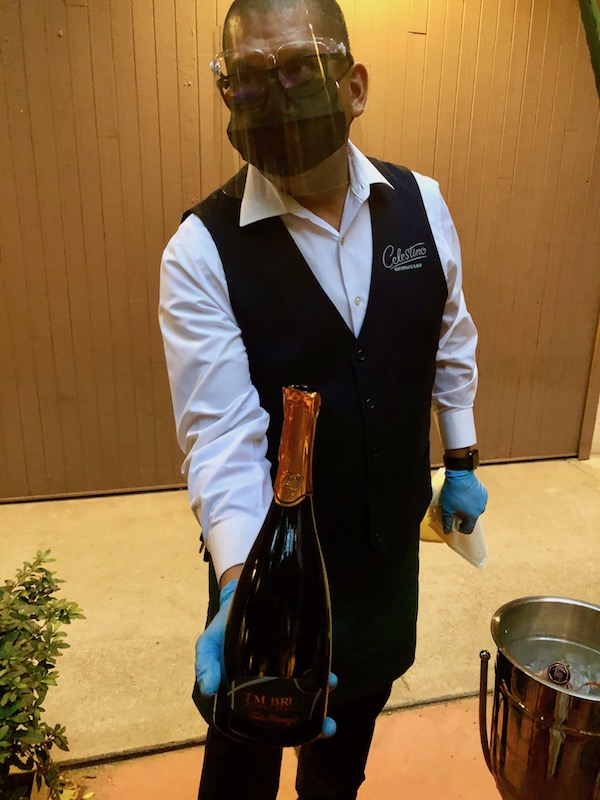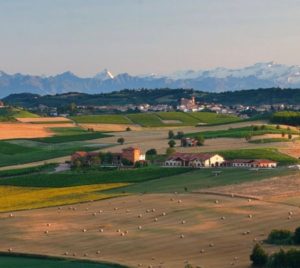We Celebrate (with) Tenuta Montemagno’s New Dry Sparkling Bruts!
Prosecco from northeast Italy has attained such an affection (or affectation depending on the view) that is is always been the first to come to mind when you think of Italian sparkling wine. Yet the Barbera variety that makes up TM24 and TM36 shows how a historic, versatile and charming bottle-fermented sparkling wines made from both native and international grapes can often be overlooked these days. We loved it, and so did our wine writer and wine expert friends.

Experts agree “the very idea to have the Metodo Classico of 100% Barbera that refines on yeasts for 24 (TM24) and 36 months (TM36) is astonishing. They are known to be sparkling wines born “from the synergy of intuition and innovation.”

The Metodo Classico made from Barbera grapes are harvested early, hand picking and carefully curated. The perlage of TM Brut 24 is elegant and fine; the bouquet is intense, delicate and generous, notes of yeast and delicate hints of crusty bread, overtones of freshly picked flowers and wild berries. It is fresh and lively on the palate, with a strong, clear and pleasant taste. The excellent underlying acidity and clearly expresses minerality. And the lingering finish presents light notes of wild plum and currants. Therefore, the peculiar traits of Barbera – bouquet and acidity, are well present almost as if weaving the warp on which the other sensations intertwine. TM Brut 24 has been rated 92 point by Wine Enthusiast.
If the TMBrut 24 is “unexpected” because of its structure, color and pleasantness, the TM Brut 36 is surprising and unique, enough to be awarded with the Gold Medal – category Sparkling Rosé, in the International wine Competition The Global Sparkling Masters 2020.

The bouquet reveals an intense fragrance, delicate and generous. Notes of yeast and crusty bread, overtones of freshly picked flowers and wild berries. On the palate, it is fresh, lively and savoury, excellent underlying acidity with clearly expressed minerality and a light finish of wild plum and currants.
In this sparkling too, the characteristics of the variety are the texture which the other perfumes and aromas are waived on.
These bottlings are produced using the traditional method, known as metodo classico in Italy. Yeast and sugar are added to still wine, which is then bottled with a crown cap. The yeast then ferments the sugar into alcohol, creating bubbles that contain naturally occurring carbon dioxide.

The wine then rests on the spent yeast, known as lees, which often imparts sensations of bread crust or brioche before the yeast is removed through a process known as disgorgement. In contrast to sparkling wines that are produced through the Charmat method, like Prosecco, where bubbles are formed in pressurized steel tanks, bottle-fermented sparklers typically boast greater depth, complexity and longevity.
Barbera d’Asti is the identity of Tenuta Montemagno, wine producers in the heart of Monferrato. With perspective, it is clear that the precious and versatile Barbera is the variety that most of all tells the story of Tenuta Montemagno, through its 80 years old vineyards, planted on clay and limestone soil with slightly silty marls, Western facing TM24 and TM36 both are spectacular examples of the traditions and innovations of sparkling wines.
Until the 1990s, metodo classico was made mainly in Northern Italy, specifically in Piedmont, around the town of Trento in Trentino, and in Oltrepò Pavese and Franciacorta in Lombardy. With some notable exceptions, quality often underwhelmed and most of the production remained in the country. Today, there’s an array of stunning sparklers made from a wide range of grape varieties available in the U.S. from lively and linear to complex and elegant.




 Gerry Furth-Sides
Gerry Furth-Sides  Barbara Hansen
Barbara Hansen  Chef-owner Alain Cohen
Chef-owner Alain Cohen  Roberta Deen
Roberta Deen  Jose Martinez
Jose Martinez  Nivedita Basu
Nivedita Basu